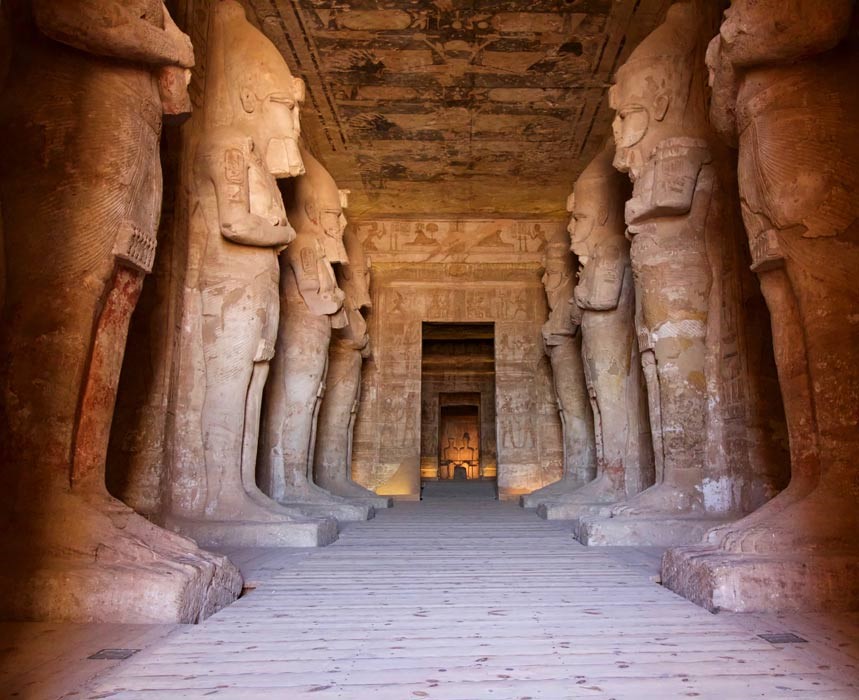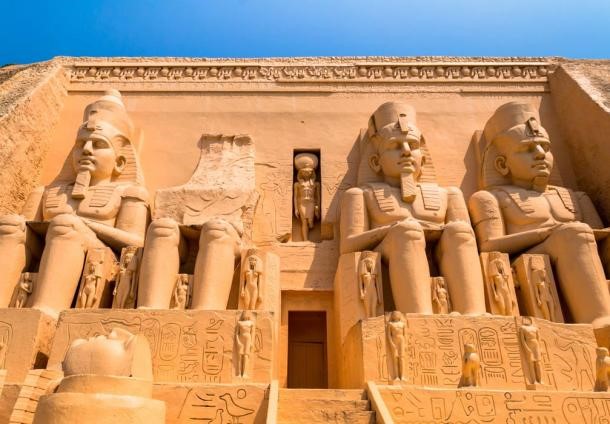
The Abu Simbel Temple is an enormous rock temple complex located on Egypt’s border with Sudan. Originally known as the “Temple of Ramesses, Beloved by Amun,” the temple was commissioned by the powerful pharaoh Ramesses II in 1264 BC to celebrate his victory over the Hittites at the Battle of Kadesh . The temple complex was eventually abandoned and was buried under millennia of desert sand until its rediscovery during the early part of the 19th century.
The complex consists of two huge temples – the Great Temple and the Small Temple – which were carved into the mountainside. At the entrance of the Great Temple, four colossal seated statues of Ramesses II (measuring 20 meters or 65 ft. in height) gaze upon all who approach it. The Small Temple, which may have been built for Nefertari, the wife of Ramesses II, has an entrance guarded by two statues of the queen, and four of the pharaoh, each measuring 10 meters (33 ft.) in height.

Great Pillared Hall, Temple of Ramses II, Abu Simbel, Egypt. Source: chemistkane /Adobe Stock
In the inner sanctum of the Great Temple, there are four statues which depict Ra, Amun, Ptah, and Ramesses himself. The temple was built in such a way that twice a year, the 21st of February and the 22nd of October, the sun’s rays enter the inner sanctum and illuminate three of the statues.
During the 1960s, the Aswan High Dam reservoir was built, which resulted in the creation of Lake Nasser. This threatened the existence of the Abu Simbel Temple, and so the temple was completely dismantled, relocated, and then reassembled in 1968.
Today, the temple is a UNESCO heritage site and the most visited site in Egypt after the Pyramids of Giza .
Top Image: The entrance into the Great Temple of Abu Simbel, with four statues of Ramesses II. ( auimeesri /Adobe Stock)






